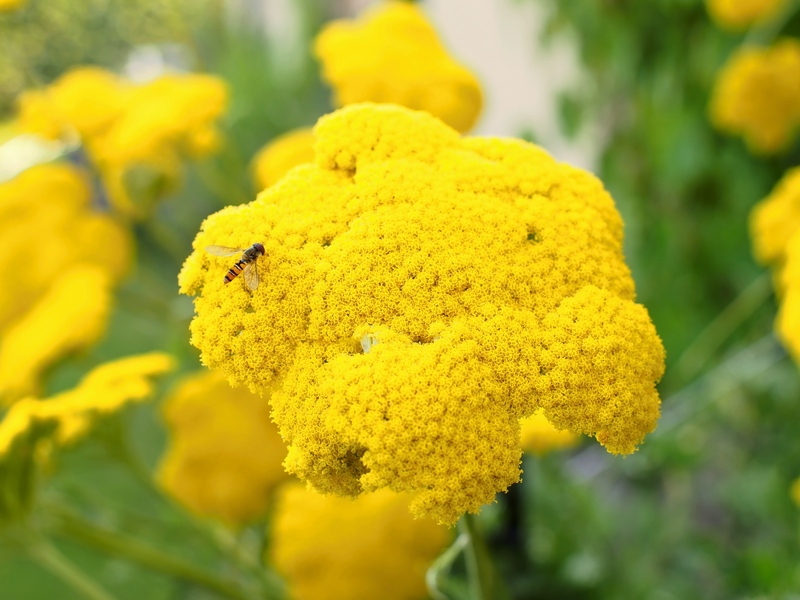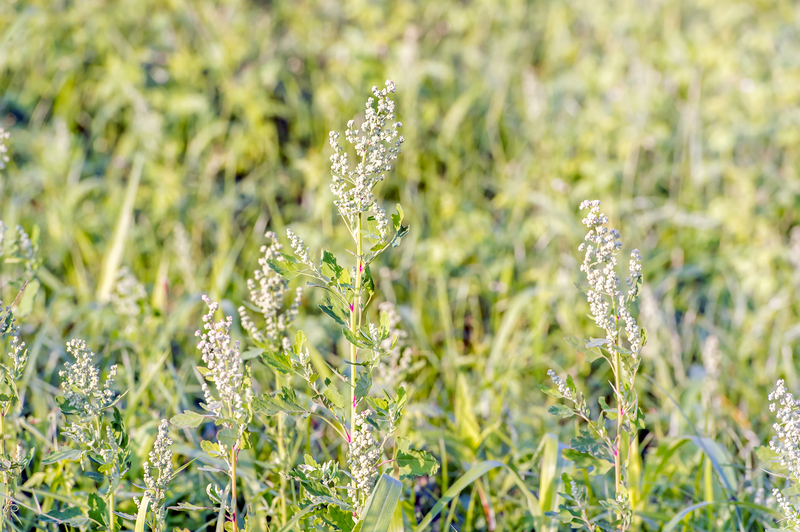From Peelings to Plantings: A Soil Revolution
Posted on 22/06/2025
From Peelings to Plantings: A Soil Revolution
The humble beginnings of every seed lie beneath our feet, in the world of soil. With ever-growing concern over sustainable agriculture and eco-friendly lifestyles, a remarkable shift is taking place -- transforming kitchen scraps and organic waste into rich, regenerative soil. This article delves into the soil revolution, tracing the journey "from peelings to plantings" and unlocking the potential lying in our everyday food remnants.

Understanding the Journey: What is the Soil Revolution?
The soil revolution refers to the innovative movement of turning food and organic waste into fertile, living soil that nourishes plants and ecosystems. This revolution challenges traditional waste disposal by advocating for composting, regenerative gardening, and sustainable urban farming. Not only does this approach reduce landfill waste, but it also builds healthier soils, sequesters carbon, and promotes biodiversity -- all crucial for the planet's future.
Why Soil Health Matters
- Foundation of Food Production: Healthy soil provides nutrients, water, and structure necessary for crops to thrive.
- Climate Change Mitigation: Soils store up to 2,500 gigatons of carbon; improving soil health helps combat climate change.
- Water Quality: Healthy soils filter pollutants, regulate water flow, and prevent erosion.
- Biodiversity Booster: A single teaspoon of rich soil contains more living organisms than there are humans on earth.
With such profound benefits, it's clear that shifting our perspective on "waste" and soil can spark a revolution in food systems and environmental stewardship.
Peelings to Plantings: The Process Explained
From food scraps to garden beds, the transformation begins in our kitchens. Orange peels, coffee grounds, eggshells, vegetable trimmings -- all destined for the trash in a traditional home -- are now recognized as vital resources. So, how do we harness their potential?
Step 1: Peelings -- Recognizing the Value in Organic Waste
Every household generates food scraps. Instead of heading for the landfill, these peelings represent nutrient-rich building blocks for compost. Common kitchen waste suitable for composting includes:
- Fruit and vegetable peels
- Coffee grounds and tea bags
- Eggshells
- Bread and grains (in moderation)
- Yard trimmings and leaves
Avoid composting meat, dairy, or oily foods in backyard setups, as these attract pests and slow decomposition.
Step 2: Composting -- The Core of the Revolution
Composting is nature's method of recycling. When organic waste breaks down in the presence of air, moisture, and beneficial microbes, it becomes humus: dark, crumbly, and full of plant-loving nutrients. The composting process can be achieved through several methods:
- Traditional Compost Bins: Aerobic composting in a lidded bin, turned regularly for even breakdown.
- Vermicomposting: Using worms like red wigglers, which speed up the transformation and produce nutritious worm castings.
- Bokashi Composting: An anaerobic process that ferments scraps for faster results, including bones and dairy.
- Community Composting: Shared systems for neighborhoods, apartments, or urban settings.
Compost piles need a balance of "browns" (carbon-rich materials like dried leaves, cardboard, or wood chips) and "greens" (nitrogen-rich kitchen scraps and grass clippings). The result? A powerhouse amendment that supercharges the soil.
Step 3: Soil Enrichment -- From Compost to Plantings
Once the compost has aged, it's time for soil building. Mixing mature compost into garden beds or pots provides numerous benefits:
- Improved Soil Structure: Compost aerates heavy clay soils while increasing water retention in sandy soils.
- Enhanced Fertility: Organic matter delivers nutrients and fosters beneficial organisms that support plants.
- Disease Suppression: Healthy soils outcompete harmful pathogens and promote resilient plant growth.
- Reduced Reliance on Chemicals: Compost reduces the need for synthetic fertilizers or pesticides, fostering a more natural ecosystem.
With fertile, living soil, gardeners can plant everything from lush vegetables to fragrant flowers, closing the loop between kitchen and garden.
The Global Impact: How Composting Empowers Communities
The soil revolution is not just an individual effort; it has transformative effects on communities worldwide.
Urban Composting Initiatives
Cities like San Francisco, Toronto, and Milan have enacted mandatory compost collection, diverting thousands of tons of food waste from landfills. Such actions:
- Reduce greenhouse gas emissions caused by decomposing food in oxygen-free landfill environments.
- Provide high-quality compost for parks, urban farms, and community gardens.
- Create green jobs and foster community involvement in sustainability efforts.
- Encourage citizens to rethink their relationship with waste and consumption.
Regenerative Agriculture and Large-Scale Soil Restoration
Globally, the adoption of regenerative farming -- which often begins with improving soil health through compost applications -- is gaining momentum. By shifting from synthetic fertilizers to natural amendments like compost, farms restore biodiversity, enhance yields, and combat desertification. Programs like The 4 Per 1000 Initiative advocate for a 0.4% annual increase in soil carbon as a meaningful climate action.
Soil Revolution at Home: How to Start Your Compost Journey
Anyone can participate in the soil revolution, starting right in their own kitchen. Here's how:
Choosing Your Composting Method
Selecting the right system depends on your space, budget, and lifestyle:
- Backyard Bin for outdoor space and higher volumes of waste.
- Worm Bin for apartments, classrooms, and speedy composting.
- Bokashi Bucket for processing cooked foods and meat scraps indoors.
- Community Drop-Offs if space is limited or time is short.
Composting Tips for Success
- Balance Browns and Greens: Aim for a 2:1 ratio of browns to greens to avoid odor and maximize decomposition.
- Keep It Moist: Compost should feel like a wrung-out sponge.
- Turn Regularly: Aerate your pile every couple of weeks to speed up the process.
- Monitor Temperature: Active piles heat up; if cool, add more greens or turn more often.
- Be Patient: Complete composting can take 2-9 months, depending on method and season.
The Science Behind the Soil Revolution
Microbial Magic: How Decomposition Works
When food scraps are added to a compost pile, a microscopic army springs into action. Bacteria, fungi, actinomycetes, and invertebrates break down complex organic molecules, converting them into simpler substances plants can absorb. This soil revolution at the microscopic level is what makes compost so potent.
Humus -- the end product -- is a stable, rich material that holds nutrients and water far better than plain topsoil. It acts as a sponge and a reservoir, continually releasing nutrition to growing roots.
Soil Health and Climate Change
- Carbon Sequestration: Building organic matter in soils draws carbon out of the air, buffering climate change.
- Reduced Methane Emissions: Properly composted waste emits less methane than buried landfill waste.
- Soil Resilience: Healthier soils withstand drought, floods, and pests far better than degraded soils.
Beyond Peelings: Other Paths to Enriching Soil
While composting kitchen scraps is the heart of the peelings to plantings movement, the revolution extends further:
- Cover Cropping: Growing plants like clover or vetch to fix nitrogen and improve soil structure.
- Mulching: Spreading organic matter over soil to retain moisture and suppress weeds.
- Biochar Incorporation: Adding carbon-rich biochar to enhance fertility and water retention.
- Crop Rotation: Alternating crops to manage nutrients and suppress diseases naturally.
Each method works in harmony to foster the kind of soil that is teeming with life, ensuring robust harvests and healthier ecosystems.
Innovations Shaping the Future of the Soil Revolution
Technology Meets Dirt
The latest wave of the soil revolution is powered by technology and creativity:
- Smart Composters: Automated devices for homes and restaurants that rapidly break down food into ready-to-use compost.
- Soil Sensors: Track health metrics like moisture, nutrients, and microbe levels for data-driven gardening.
- Urban Vertical Farms: Utilize composted material to grow food in city centers, reducing transportation emissions.
- Biodegradable Packaging: Products that decompose into soil-enriching matter.
These innovations make it easier than ever for people and organizations to participate in the regenerative soil movement.

Embracing the Peelings to Plantings Mindset
As we come full circle, the core message of the soil revolution is clear: every peel or coffee ground we cast aside carries the promise of new life.
- Rethink "Waste": In the cycle of life, nothing is wasted; it's simply transformed.
- Take Local Action: Compost at home, join a community garden, or support regenerative farmers.
- Share Knowledge: Educate friends, children, and neighbors about soil health and composting.
- Advocate for Policy: Support local compost initiatives and sustainable soil management regulations.
Conclusion: Digging Deeper for a Greener Tomorrow
The soil revolution is a powerful, grassroots movement rooted in the simple act of turning everyday peelings into plantings. By understanding the science of soil, embracing composting as a daily habit, and supporting innovations in agriculture, we each hold the power to regenerate the land -- and safeguard our food future. With every banana peel, coffee ground, and carrot top, we aren't just reducing waste -- we're building a foundation for healthier people, more resilient communities, and a truly sustainable planet.
Join the soil revolution today. Every peeling counts!

